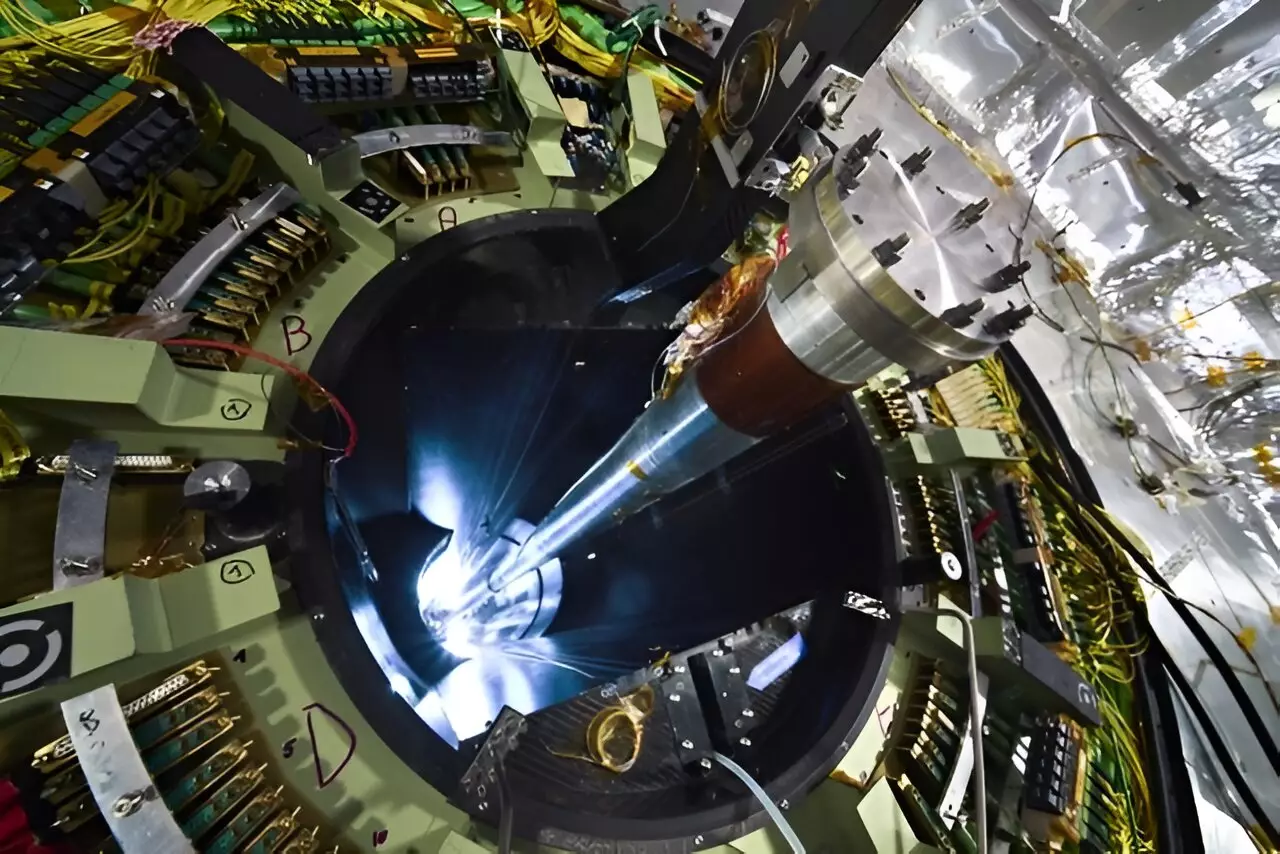The quest for understanding the fundamental components of our universe has always captivated physicists. Among the most intriguing concepts in theoretical physics is the existence of magnetic monopoles—hypothetical particles that are essentially magnets with a single pole, either north or south. This idea, rooted in the pioneering work of physicists such as Pierre Curie and Paul Dirac, has long tantalized the scientific community, yet empirical evidence remains elusive. Recent research conducted at the Large Hadron Collider (LHC) at CERN has brought new insights, coming closer than ever before to confirming or denying their existence.
A collaborative effort led by scientists from the University of Nottingham involved experimentalists from an international research team who scrutinized a decommissioned section of the LHC’s beam pipe. Published in the esteemed journal Physical Review Letters, the research promises to provide some of the most rigorous constraints on the potential existence of magnetic monopoles. By leveraging data from high-energy particle collisions, the scientists aimed to elucidate whether these perplexing particles could manifest under extreme conditions.
The lead theorist, Oliver Gould, poignantly states, “The idea of particles existing with only a single magnetic pole has haunted the fabric of physics.” This investigation aligns with ongoing curiosity and scientific exploration, revealing both the challenges and potentials that magnetic monopoles represent in modern physics.
The team honed in on a beryllium beam pipe that had previously experienced intense radiation from billions of particle collisions. The LHC generates magnetic fields of remarkable strength—stronger even than those of neutron stars—potentially leading to the spontaneous formation of magnetic monopoles through a process known as the Schwinger mechanism. This offered researchers a unique opportunity to search for monopoles within a milieu charged with extraordinary energies.
Aditya Upreti, a Ph.D. candidate who played a significant role in the experimental analysis, elaborates on the selection of the beam pipe for their inquiry: “The proximity to the collision point enabled us to probe these elusive particles with unprecedented accuracy, as magnetic charge is conserved and the monopoles are expected to be trapped within the pipe’s material.”
Despite the hope and potential that the study represented, no direct evidence of magnetic monopoles was uncovered during the investigation. However, the findings did succeed in excluding the presence of monopoles lighter than 80 GeV/c², reaffirming established boundaries in the search for these enigmatic particles. The constraints developed by this research arguably establish some of the most definitive parameters in the ongoing exploration for magnetic monopoles.
With the goal to extend their investigations, the research team is contemplating further studies with a focus on a more recent operation of the LHC, specifically at higher energy levels. Such advancements could double the experimental reach for searching for magnetic monopoles, offering a promising pathway for future discoveries.
Future endeavors in monopole research are likely to capitalize on the foundation laid by this recent experiment. As technology advances, and as physicists refine their tools and techniques, the possibility of uncovering magnetic monopoles may become a tantalizing reality. The potential implications of such discoveries are monumental; confirming the existence of magnetic monopoles could revolutionize our understanding of particle physics, unveiling new theories about the very nature of electromagnetic forces and the universe itself.
While this latest inquiry may not have yielded a definitive discovery, it serves as a crucial milestone in the ongoing quest to validate or dismiss the theory of magnetic monopoles. As scientists continue to explore the frontiers of particle physics, each effort—whether successful or not—adds to the collective understanding of our cosmos and broadens the horizons of what we assume to be possible. The journey towards uncovering the mysteries of magnetic monopoles remains fraught with challenges yet illuminated by the promise of groundbreaking realizations.

